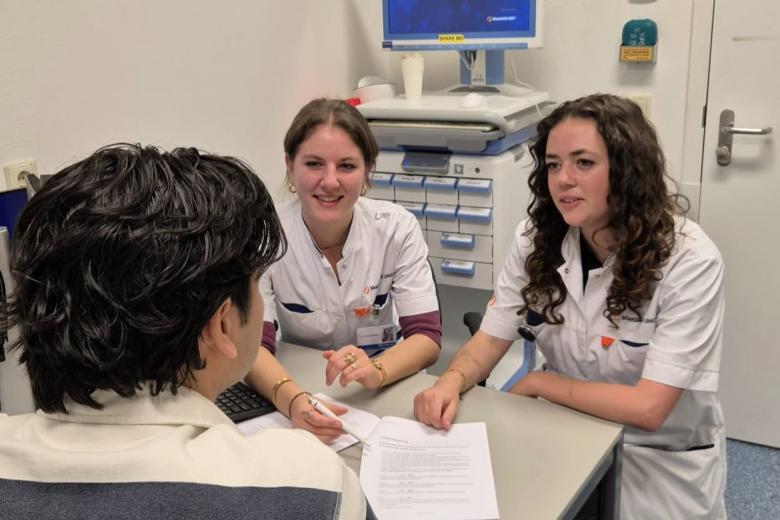Faster heart rhythm as possible treatment for heart failure
Accelerating the heart rhythm may offer a new treatment option for patients with diastolic heart failure and atrial fibrillation. Researchers from Maastricht (CARIM and MUMC+) discovered how this works in a virtual heart, and showed that it works in real patients. This means that these patients, for whom there are currently few treatment options, could potentially be treated with a pacemaker. The results were published today in the European Heart Journal.
In diastolic heart failure, the heart muscle does not relax properly or is stiff, so the heart does not fill adequately with blood. As a result, the pressure in the heart rises, and the heart is not able to pump enough blood to supply the tissues with oxygen. Around 120,000 people in the Netherlands suffer from this condition, also known as a 'stiff heart', and experience symptoms such as shortness of breath during exertion. It is often accompanied by atrial fibrillation, an irregular heartbeat. While medication is available for other forms of heart failure with reduced pumping ability (systolic heart failure), treatment options for diastolic heart failure are very limited.
Virtual heart
Traditionally, many patients with heart failure are treated with medication that slows heart rhythm, as is the case with systolic heart failure. However, the Maastricht research points in a different direction: speeding up the heart rhythm could be a solution for patients with diastolic heart failure. Using computer models that simulate the functioning of the heart, the researchers discovered that a slight increase in heart rhythm reduces the pressure in the left atrium of a virtual heart. This can lead to improved heart pumping function, and in real patients, to a reduction in symptoms such as fatigue and shortness of breath.
From model to human
To test whether a real heart reacts the same way to an increased heart rhythm as the virtual heart, the researchers accelerated the heart rhythm of 75 patients with atrial fibrillation. The result was similar to the simulations: by using a pacemaker to make the heart beat 20 to 30 beats per minute faster than the patient's own heart rate, the pressure in the left atrium decreased. This suggests that increasing the heart rate during rest can indeed have a positive effect on the heart function of these patients.
Dual pacemaker
The computer model also showed that proper coordination between the contraction of the atria and the ventricles could lead to an even greater improvement in pumping function. While in a computer model researchers can adjust the heart rate, in real patients this is done with a pacemaker. Although in this initial study only the atria were stimulated with a pacemaker, the Maastricht researchers will soon begin a study on the effect of a 'dual pacemaker,' which will stimulate both the atria and the ventricles.
From theory to practice faster
Thanks to the use of computer models, the time required for scientific research can be significantly reduced. Therefore, patients will benefit more quickly from new developments. Lead researcher Joost Lumens explains: "In the past, it took several years to bring an idea into practice. With our computer models, we can carry out such research in just a few days. This not only saves a lot of time but also reduces costs and the use of laboratory animals."
This article was published before on the Maastricht MUMC+ website.
Also read
-
Macrophages as key to treating liver fibrosis
Sabine Daemen is researching how certain macrophages can slow down fatty liver disease and fibrosis in order to develop new therapies.

-
Teacher Information Points at UM
UM faculties now host Teacher Information Points (TIPs) that offer local, “just-in-time” and on-demand support for teaching staff. The aim is simple: to provide help that is closely connected to day-to-day teaching practice.

-
More than a student job: five alumni about their unique role in groundbreaking vascular research
What is it like to take part in cutting-edge vascular research as a student, standing in the operating room, directly responsible for handling patient material? Five alumni of the Maastricht MAPEX student team share what they learned, the challenges they faced, and how this experience shaped their...
